This article is a treat for all of you Japanese pop culture fans out there. Over the past couple of years, manga (Japanese comics) and anime (Japanese cartoons) have been extremely popular outside of Japan.
Lots of manga has been published by itself, but a lot of titles get featured in magazines about manga that are catered toward lots of different demographics. Today, we’re going to give you a list of the first fifteen top Japanese manga magazines of all time.
15. Weekly Manga Sunday
Also known by its nickname, Mansun, Weekly Manga Sunday is a magazine that has been discontinued on February 19, 2013. Manga Sunday released its first issue in 1959 and was published by Jitsugyo no Nihon Sha.
During a large portion of its time, the magazine released an issue once a week, but on June 5, 2012, it started to release issues only twice a month, dropping “weekly” from its title. Eventually, the company decided to stop continuing the magazine in February the next year.
14. Weekly Morning

Weekly Morning is a magazine catered to adult men that released its first issue 1982 and has been published by Kodansha.
When it made its debut in 1982, it was originally called Comic Morning, but changed its name to Weekly Morning eventually. Another name it’s well known by is simply Morning. Unlike the other magazines that publish once a month or every two weeks, this one releases an issue every week.
There are many series currently running, but a few of these series are Billy Bat, Cooking Papa, and Giant Killing.
13. Jump Square
With its premiere on November 2, 2007, Jump Square is a magazine that releases a new issue once a month. Most of its content is manga.
It was the magazine to replace Monthly Shōnen Jump after it had been discontinued by Shueisha in June 2007. Just like all of the monthly shonen magazines, Jump Square is catered toward people between the ages of sixteen and twenty one.
When the magazine first launched, over 500,000 copies were sold causing it to be completely sold out. In just three days since its release, 70% of the 500,000 copies were sold and due to extremely popular demand, another hundred thousand copies were made for fans, something that was unusual to do with Japanese magazines.
A few titles that Jump Square currently features are Ao no Exorcist, Gate 7, and Platinum End.
12. Big Comic
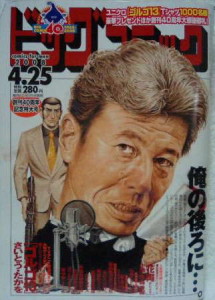
Big Comic, published by Shogakukan, is a semimonthly released magazine that had its first issue released on February 29, 1968. When it was first created, the magazine released issues once a month, but started releasing them every two months starting April 1968.
For more than 40 years, the front cover had always shown a rendered portrait of a famous individual that was created by a manga artist named Shūichi Higurashi, but the artist had to retire due to his declining health.
The magazine publishes a lot of series created by very well known artists and continues to publish Takao Saito’s Golgo 13, which is the oldest manga series to continue to be published.
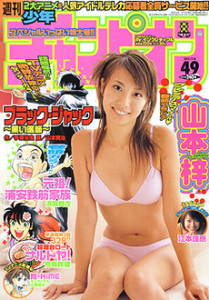 11. Weekly Shōnen Champion
11. Weekly Shōnen Champion
This is a magazine that has featured many popular manga artists such as Go Nagai, Masami Kurumada, Osamu Tezuka, and more.
Its first issue was released on July 15, 1969 and is published every Thursday by Akita Shoten.
Some well known titles associated with Weekly Shōnen Champion are Apocalypse Zero, Black Jack, Cutie Honey, and more.
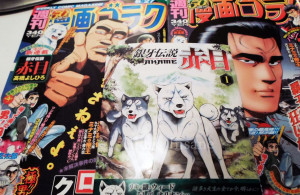 10. Weekly Manga Goraku
10. Weekly Manga Goraku
This magazine is one that has published an issue a week every Friday since its first issue in 1968.
It’s published by a company called Nihon Bungeisha and is catered more towards men of middle age.
9. Weekly Shōnen Sunday
Pay no real attention to the title of this magazine because despite the word “Sunday” being in there, issues are actually released every Wednesday. Originally, releases were every Tuesday, but was changed to Wednesday in 2011.
Weekly Shōnen Sunday’s first launch was in March 1959 and is published by Shogakukan. It was actually made to be a response to their rival, Weekly Shōnen Magazine.
When the magazine celebrated its 55th anniversary, fifty five brand new manga titles were released in Weekly Shonen Sunday, Shonen Sunday S, Ura Sunday, and Club Sunday both online and in print throughout 2014.
Some of the running manga titles include -Asaoka Kōkō Yakyūbu Nisshi- Over Fence, Ane Log Moyako Neesan no Tomaranai Monologue, Arata Kangatari〜Engaku Kōgatari〜, and more.
8. Big Comic Original

Published by Shogakukan and first launched in 1972, this magazine is catered toward older adult men and the majority of its audience is male.
Big Comic Original is a sister magazine to Big Comic, which goes on sale twice a week while Original goes on sale only every two months.
The magazine has published over a thousand issues and most of the issues published contain over 350 pages that are printed in black and white. Not only that, but the cover usually contains a photo of a cat or a dog and a haiku. Over eighty three percent of the magazine’s readers are over the age of thirty and only about a quarter of its audience is female.
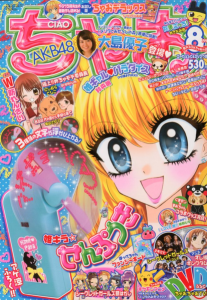 7. Ciao
7. Ciao
Ciao is a shoujo manga magazine that is supposed to be catered toward young girls between the ages of nine and fifteen who are into reading stories about relationships and other things not related to relationships such as science and historical subjects.
This magazine is one of the more unique ones as it has some sort of item attached to it such as paper crafts, makeup, watches, notebooks, pencils, and more. A different item is attached every month. It launched its first issue in 1977.
6. Weekly Young Jump
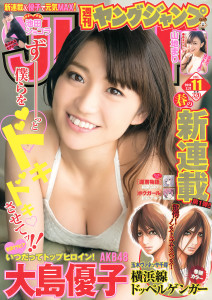
Launched in 1979 and published by Shueisha, this magazine is another one that releases its issues weekly and runs many titles of manga in each one.
It has two special issues: one named Miracle Jump which occurs monthly and another named Aoharu which has irregular releases. It also has three sister magazines called Ultra Jump, Grand Jump, and Jump X. It’s catered toward the male crowd and has a tendency to feature a lot of content showing violence.
As of now, 27 manga titles are being shown in this magazine, some of them including 87 Clockers, Amano-ke Yotsugo wa Ketsuekigata ga Zenin Chigau, and Fairy Girls.
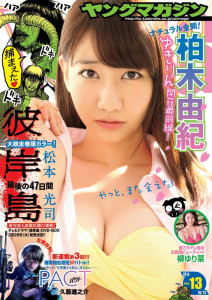 5. Weekly Young Magazine
5. Weekly Young Magazine
Started in 1980 on June 23 and published by Kodansha, this is a “seinen manga” magazine, meaning that it caters mostly toward young adult men.
The cover of this magazine typically has a gravure idol, or a model who mostly poses in swimsuits and lingerie, and is shown in a few pages inside as well.
Some of the titles currently running in this magazine are Kurohyō: Ryū ga Gotoku Shinshō, Winning Ticket, Kecchin, and more.
4. Monthly Shōnen Magazine
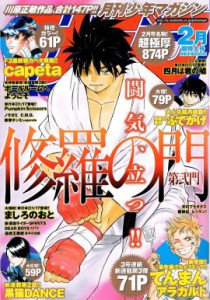
Published by Kodansha, its first issue was released in 1964. When it first came out, it was named Bessatsu Shōnen Magazine until its name was changed to Monthly Bessatsu Shōnen Magazine in 1969.[/formatp]
Finally, in 1975, its name was changed one last time to the current title it has today. Issues used to be released quarterly, but then the changed to be released monthly was made.
Some of the current manga series being shown are Nanto Magoroku, C.M.B. ~Shinra Hakubutsukan no Jiken Mokuroku~, Tekken Chinmi Legends, and others.
3. CoroCoro Comic
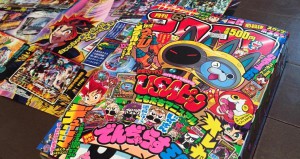
Unlike the two previous magazines that released issues weekly, this one releases their issues once a month on the 15th, starting with their very first release on May 15, 1955. The release date is worth it though as each issue is much longer than the others at 750 pages long.
CoroCoro features very popular Japanese pop culture such as Doraemon and well known anime and video game series, Pokemon. The main demographic this magazine caters to is young boys that are of elementary school age. It has two sister magazines, Bessatsu CoroCoro and CoroCoro Ichiban!, which are released every two months.
When CoroCoro first launched, it was originally intended as a magazine for the most popular manga in Japan, Doraemon. It also often promoted toys and video games related to other popular mangas like Pocket Monsters, also popularly known as Pokemon.
Part of Pokemon’s huge success was due to this magazine due to the fact that you originally could only purchase the game from the magazine and that helped the magazine’s sales as well.
Some of the manga in this magazine include Mario-kun, Pocket Monsters/Pokemon, CoroCoro Manga College, and more.
2. Weekly Shōnen Magazine
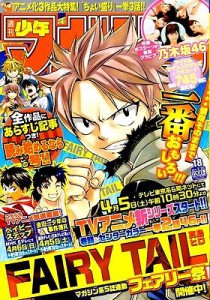
Weekly Shōnen Magazine, owned by Kodansha, is a magazine that was first published on March 17, 1959. It’s a magazine that is mostly read by an audience that is much older, but a lot of male high school and college students read it as well.
Most of the magazine’s success occurred in the seventies and gained many more sales; however, that spot was eventually taken over by Weekly Shōnen Jump in 1968 when Jump was created. Fortunately, it had made a comeback during the nineties once Jump lost the popular franchise, Dragon Ball, and it started to make more sales again.
Some manga series that are currently featured in this magazine are Acma:Game, Ahiru no Sora, Aho Girl, and more.
1. Weekly Shōnen Jump

Launched by Shueisha and first released on July 2, 1968, Weekly Shōnen Jump is the number one selling and longest running magazine in Japan since. This is a manga series that mostly caters toward the young male demographic as it shows a lot of action, comedy, and cars.
This magazine was at its most popular during the 80s and 90s and has since declined with only 2.4 million copies sold in the beginning of 2015 versus the 6.53 million copies sold in the past. Weekly Shōnen Jump’s competition was Weekly Shōnen Magazine and Weekly Shōnen Sunday.
Once a year, this magazine held a contest for all new manga artists letting them create one shot stories. The top picks were judged by fellow manga artist of various generations and a winner would be crowned and given a special award for best series.
Currently, twenty manga titles are being featured in this magazine such as Assassination Classroom, Black Clover, Bleach, and more.
